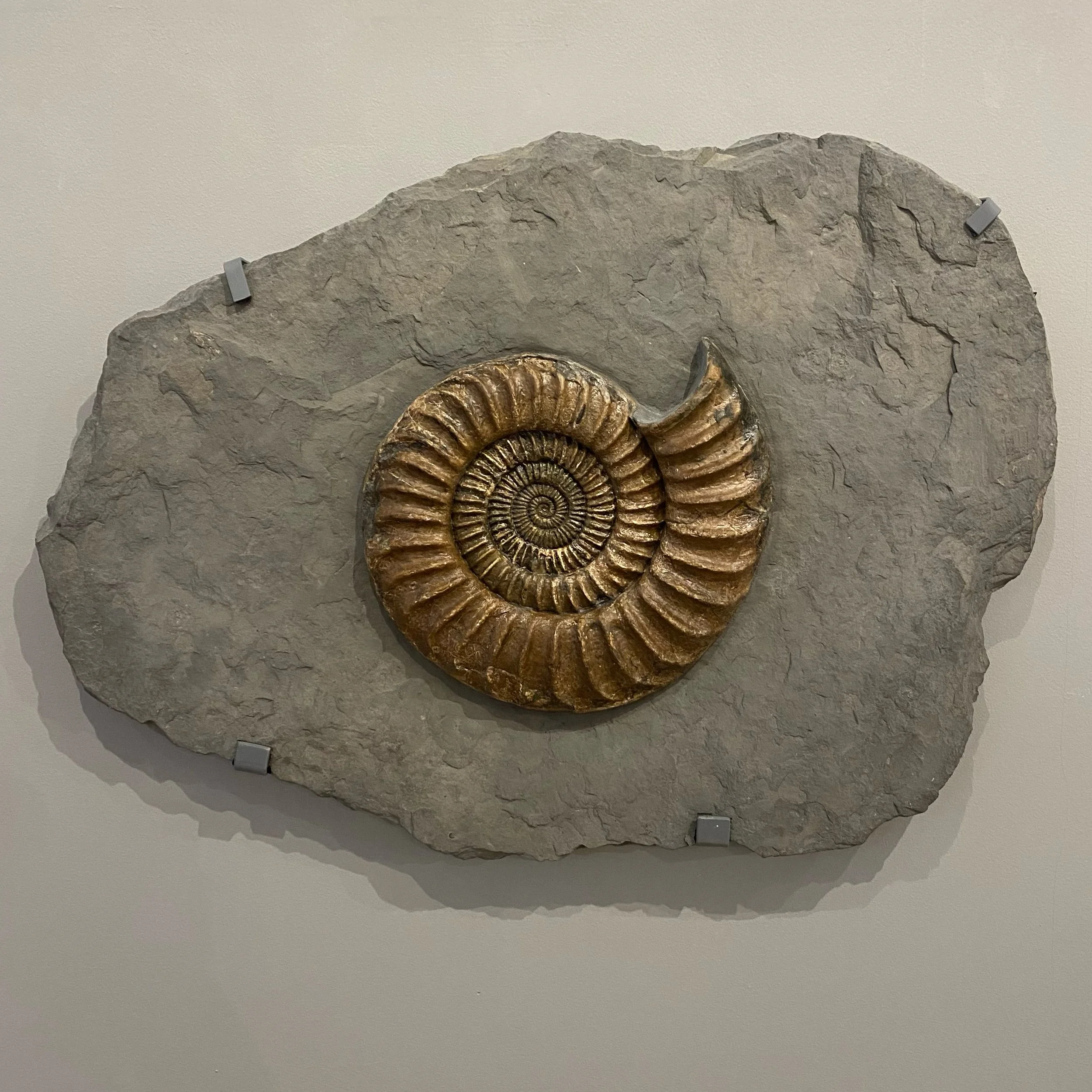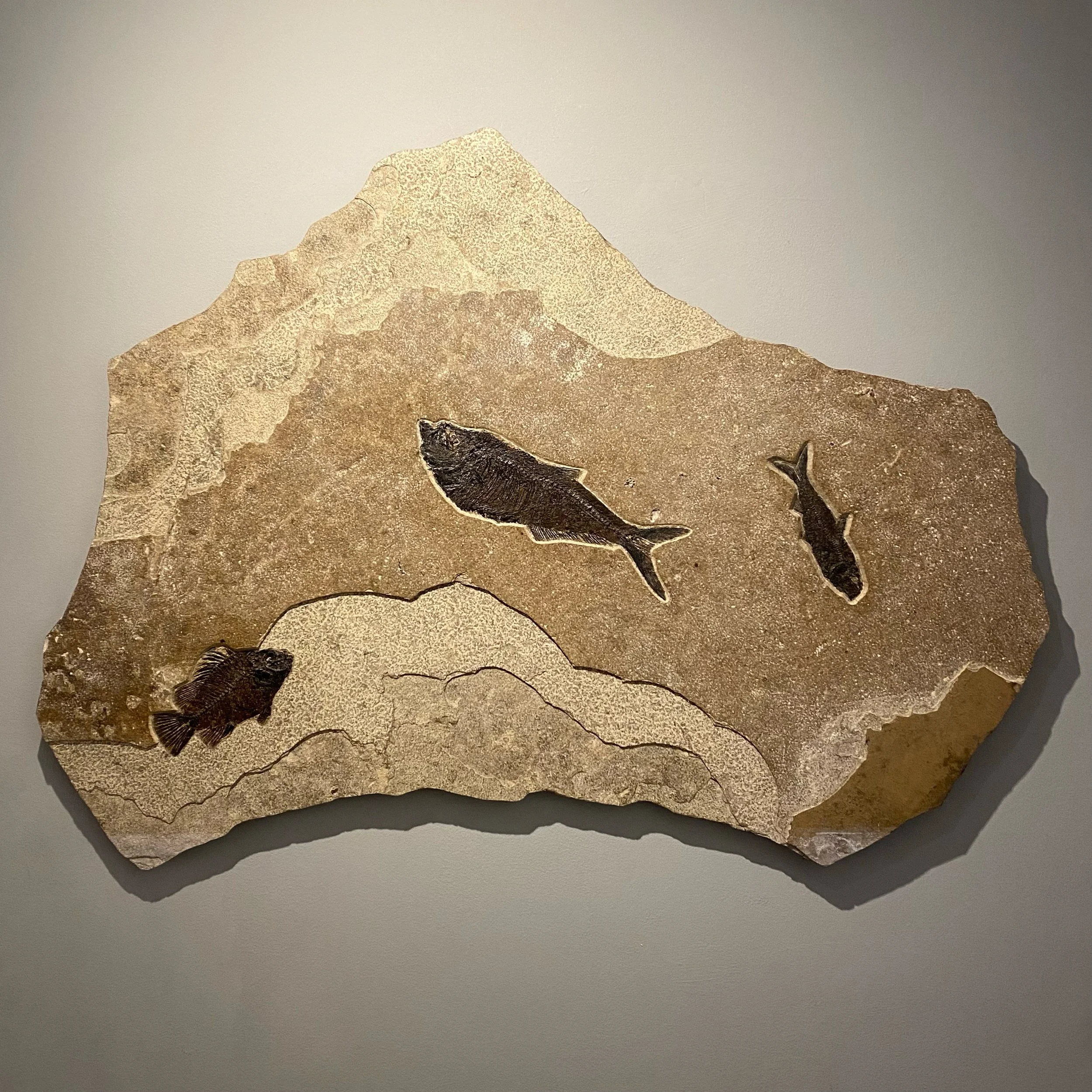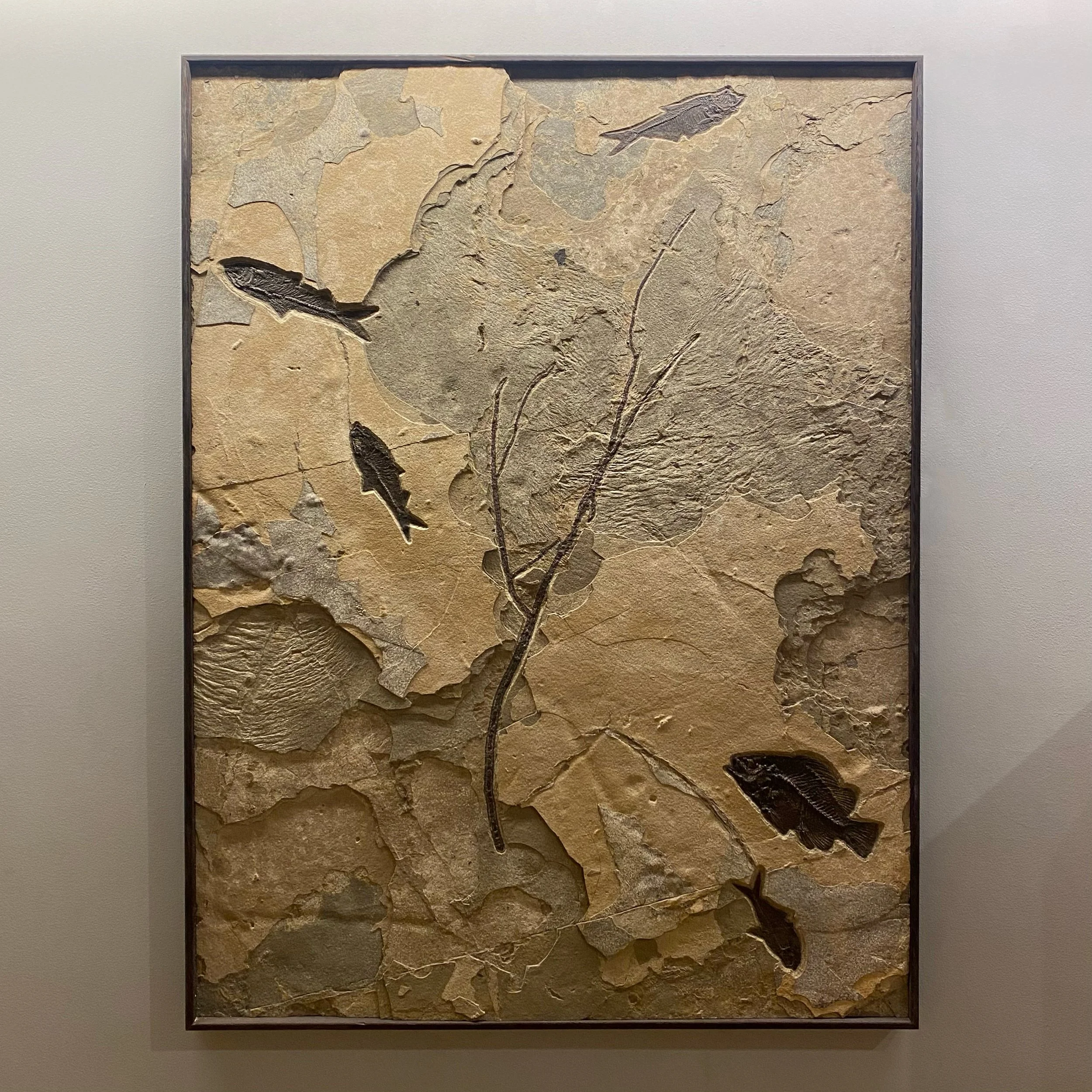Featured in 'The Last Supper': New Fossilised Ammonite and Fish Plates
Featured in our current exhibition, ‘The Last Supper’ (running until December 22nd) are a range of wall mounted Natural History pieces, including a large ammonite discovered in Dorset’s Jurassic coast and fossilised fish plates from Green River Formation, USA.
Fossilised Ammonite Plate
Beginning over 200 million years ago, the Earth’s Jurassic Period saw sea levels rise and transformed from the Triassic desert into a shallow tropical sea. As a result, a wide variety of marine species appeared in the newly created marine environments, many of which are now preserved as fossils.
One of which is the Ammonite, a shelled cephalopods that died out about 66 million years ago (roughly the same time as the dinosaurs) and are found all around the world, often in very large concentrations. Ammonites are formed when the remains or traces of the animal became buried by sediments that is later solidified into rock. Specimens show an enormous range in size depending on species, from the very small at less than 20 mm in diameter, to the largest being 1.95 m in diameter.
The example included is the species Arnioceras semicostatum dating back to the Late Jurassic period (164-145 million years ago) and was discovered in Dorset, UK. Dorset’s “Jurassic coast” runs from East Devon to East Dorset, is 96 miles long and gained its name due to the abundance of fossils found in its cliffs dating from the Jurassic period.
Fossilised Fish Plates
An Eocene geologic formation that dates back more than 50 million years, the Green River Formation occurred due to mass sedimentation in a group of intermountain lakes in three basins along the current Green River in Colorado, Wyoming, and Utah.
Covering an area of more than 65,000 square kilometers, the site formed by lakes on the intermountain foundation being gradually filled with sediment, silt, mud and dissolved minerals from streams draining the steep slopes. Wide wetlands that formed along the lakeshores were home to a variety of vegetation, including ferns and palm fronds.
It has been found that the uppermost layer of rock holds the most extensive record of fossilised freshwater fish in North America, with complete fossils of over 20 different fish species, 100 different kinds of insects, and a large variety of plants.
The formation has allowed palaeontologists to become educated on the habits of the ancient lakes inhabitants such as mass mortality layers are found, where many specimens of the same fish species are preserved in a small area showing schooling.
Moreover, sometimes fossilised fishes are discovered with what appears to be another fish in its mouth; these fossilised fishes are known as "aspirations" and are thought to depict the quick demise and burial of a fish that choked and perished while consuming another fish.


